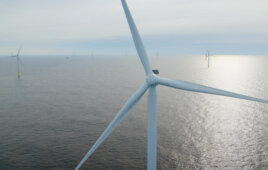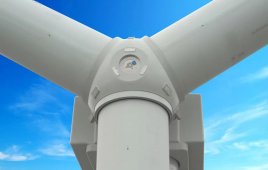 After six years, Seatower is primed and ready to shake up the offshore wind market with the first demonstration of its Cranefree Gravity foundation at the Fécamp offshore wind farm project in the English Channel.
After six years, Seatower is primed and ready to shake up the offshore wind market with the first demonstration of its Cranefree Gravity foundation at the Fécamp offshore wind farm project in the English Channel.
In this episode of Wind Talk, Petter Karal, CEO of Seatower, discusses the lessons offshore wind has learned from offshore oil and gas. He also talks about Seatower’s plans for supplying installation solutions for offshore wind in the budding U.S. market.
Click play below to listen.
This podcast is sponsored by ExxonMobil.
![]()
Filed Under: Offshore wind, Podcasts, Projects





Hmm –
Almost one-half the weight of “regular concrete” is lost in sea-water submergence. One wonders how much reinforcing steel may be required compared to the steel for a tripod pile jacket and piles for water depths up to 50 meters. The life time of an off shore wind machine is probably 30 years. 30 years ago the state of the art wind machine was in low hundreds of kw name plate range. 30 years from now, the wind machine for which the tower is fashioned will be obsolesced, requiring either abandonment of the foundation (which should still be solid as a rock), adding more gravity structures in a bound cluster, etc. In any event removal and recycling of a massive hunk of concrete challenges the imagination. On the other hand, tripod steel structures can be pulled and recycled, with a new larger structure plugged in for a bigger machine at the site using some portion of the existing collector cable.
It is not at all clear that we have a wheel that is better than those that have been displayed at the OTC over the last 50 years. Those folks are still doing it today with cranes, barges and pile drivers when the weather is good, even in the North Sea.
Thanks, MSc, very cool shot of the gravity foundations all lined up there. The gravity foundation technology has been proven by the oil and gas industry even before Thornton Banks too. For me, that’s what makes this demonstration exciting: not that Seatower is the first to prove this technology, but that gravity foundations seem to be a very viable solution for offshore wind farm installation and that there is an increasingly efficient supply chain developing behind the technology. Seatower is not the only player in this game either, which I also believe is a good thing, but they do seem to be one of the front runners in bringing this technology to offshore wind. As Karal points out in the podcast, proving more examples of this technology for a major project like Fecamp will hopefully lead to seeing the technology expand to the U.S. offshore market, where many of the huge crane ships required for more traditional installation methods (steel monopile) are simply not available right now. You’re absolutely right though. This technology works and it’s already been proven. Thanks for your comment!
Gravity foundations already proven at ‘Thornton Banks’ 5M Offshore Turbines (REpower/Senvion)
http://renews.biz/67084/emf-seeks-footings-for-fecamp/